What is the Difference Between On Site, Off Site and Technical SEO?
Posted on: April 11, 2022 11:31 AM
Thin or duplicate content holds very little value for users. Search engines strive to show high-quality content to users, and it is vital to bulk up the thin content by improving and removing it from the website.
A 404 error page is an HTTP code that states that the webpage you want to access has been moved or deleted. It is advisable to fix the broken links to 404 pages and redirect/divert users to relevant pages.
Hreflang tags are used for multilingual websites, and it allows your website to reach an audience in different countries and ensures accurate content based on their geographical region and language. For instance, the hreflang tag for Adidas France website is FR, and the hreflang tag for Adidas Germany website is DE.
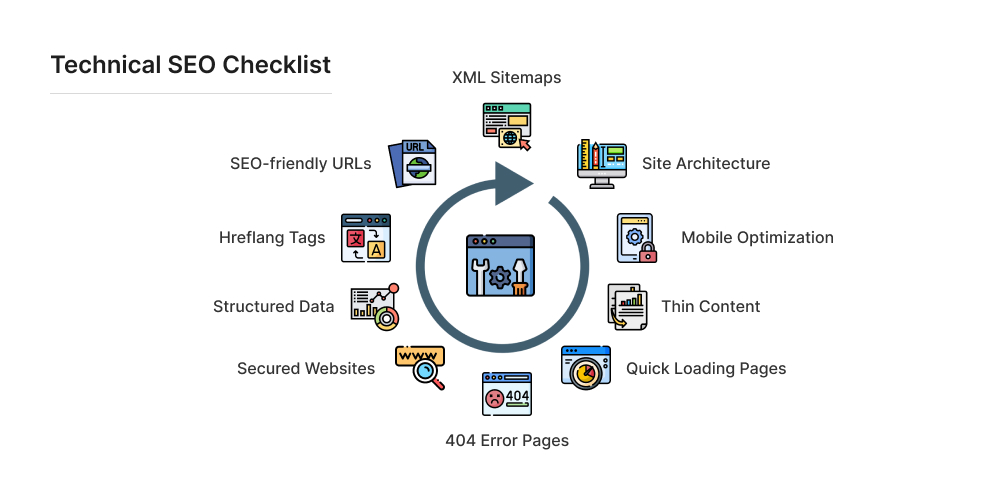
On-page SEO emphasizes those parts of your website within your reach, and you can control them. Off-page SEO focuses on improving the link profile of your website, and both offer varied benefits. Technical SEO is the foundation of your website; without foundation, you can build further.
Likewise, once the foundations of your website are secure, you head to focus on the external factors as outlined by off-page SEO. It is unfeasible to choose one and ignore the other. Therefore, you should apply all three in tandem to help improve your ranking in SERPs.
Reference:
[1] Statcounter
You can test your desktop & mobile page speed at Google PageSpeed Insights & GTMetrix.
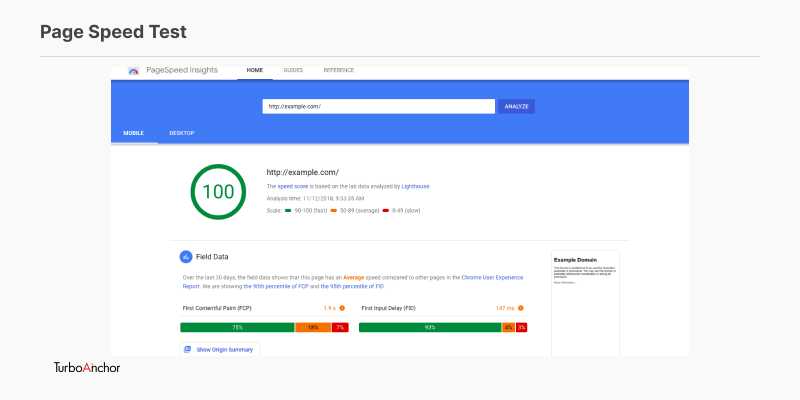
Mobile optimization allows users to access your content from their mobile devices. Mobile devices have increased substantially, and thus mobile optimization is indispensable. It focuses on site structure, site design, page speed times etc.
You can always test your website with Google Mobile Friendly Test

Page loading speed is also essential to attract and engage users. Therefore, make sure your website loads in less than two seconds for mobile and less than 4 seconds for desktop. A one-second delay can lead to fewer page views, loss in conversions and diminished customer satisfaction.
Demystifying Speed Tooling (Google I/O ’19)
A robots.txt file is used to direct the search engine crawler as to which pages it can acces. It enables the user to manage the crawler for that specific website.
Disalowing any URL in robots file does not guarantee that search engines will not index it. At times they tend to index the pages even though they are not allowed in the robots file.
Also robots file format & limitations may vary for different search engines.

Schema markup or structured data is a semantic vocabulary code added to your website. It allows search engines to structure and produce rich information related to your content in the snippets under the page title.
You can find & validate all type of different schema markups at schema.org for free.
Structured Data Properties (Google Developers Site vs Schema.org)
SEO or search engine optimization involves methods to enable a website or content to rank higher on search engines like Google, Bing, Baidu etc. It is responsible for generating organic traffic to a website, making it a robust mainstay of digital marketing strategies.
SEO traces its origins in the early 1990s, and its popularity surged in the 2000s.
Since Google has dominated the search field for over 20 years, now the majority of SEO’s framework revolves around it. No wonder Google currently retains a sweeping 91.56% of the market share by March 2022. [1]
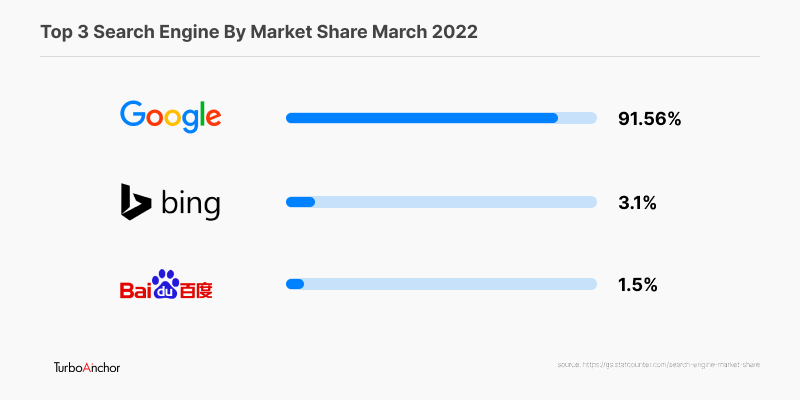
An in-depth understanding of these three basic SEO types (onsite, offsite and technical) is essential for creating a compelling and well-rounded organic search growth strategy.
On-site SEO optimizes website content to rank higher and generate more traffic to a website. Usually, on-site SEO includes landing page content, title tags, URLs, slug and internal links.
It makes it easier for search engines and users to grasp what the page is about, determine its relevance to a particular query, highlight its importance and help rank on SERPs.
On-site SEO is important because it enables search engines to comprehend the website, its content, and its relevance to a user’s query. Google constantly updates its algorithms, and optimizing your website’s content must be synced with Google’s quality guidelines.
Additionally, on-site SEO is effective and cost-efficient as it’s mostly one time job & offers quick return-on-investment (ROIs).
Expertise, authoritativeness, trustworthiness or E-A-T is a concept in Google search quality guidelines. It identifies the value, authenticity and accuracy of the content.
Google rewards high-quality content by ranking it higher in SERPs. Contrarily low-quality content is ranked poorly.
The title tag is the most important HTML feature that states the web page’s title/name. It basically defines what the particular webpage’s intent. Well optimized title has a trivial influence on organic rankings, and at the same time poor title tags can adversely impact your SEO efforts.
Best practices for title tag states;
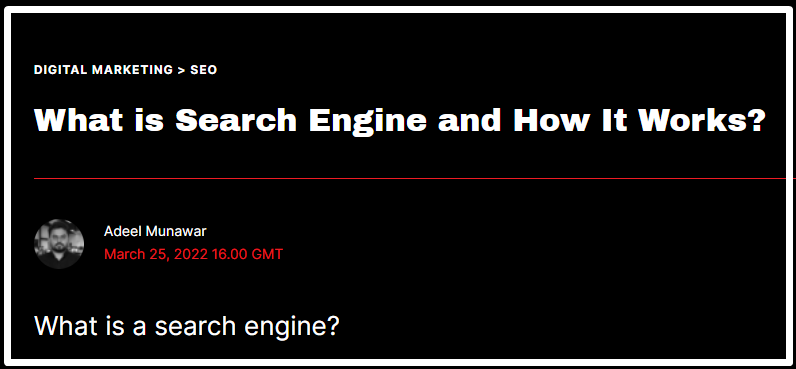
The meta description provides a summary of the web page. The meta description tag of the web page is displayed as part of the search snippet in SERPs, comprising 140-160 characters. They enable the users to assess the quality and relevance of the content. Optimizing meta descriptions yields benefits such as a high click-through rate (CTR), identification of result quality, and content relevance.

You have spent hours researching and writing an article. You will want a significant number of people to read it. Make sure to add gripping headlines to stimulate users to click on your web page.
Header tags or heading tags are used to categorize and rank headings and subheadings on a website in order of importance. They make the content more accessible for the user to navigate and also make your content packed with keywords for the search engines.
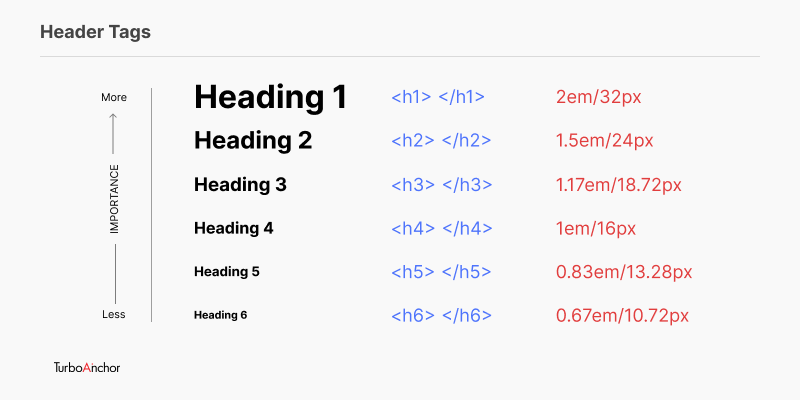
It refers to writing content by incorporating keywords and key phrases across your website. It helps search engines identify your content according to its quality and relevance and rank it accordingly.
Keyword cannibalisation means when too many identical or similar keywords are dispersed across your content, which confuses the search engines and might cause the pages to compete against each other.
For instance, you have two content pages on the same keywords, and intet is also similar, then in such case it may not be determined which page should be ranked higher for a particular query.
Read more about: What are Keywords & How to Do Effective Keyword Research?(2022)
Image optimization is also vital for the higher ranking of your content. In addition, it provides better loading time, enhanced user experience(UX) and more ranking opportunities (e.g. Google images).
Your website’s functionality and ease of use is crucial to boost traffic. You can employ some steps to ensure a satisfying user experience. Firstly, you have to organize and categorize the content, allowing easy access to the information. You can also use call to action (CTA) across your website, add links to other websites, and add images and videos.
The regular content audits entails scrutinizing your content and aligning it with your business goals. Auditing content will reveal whether your content generates ROI, if the content is still relevant or outdated, and which content is gaining traction or otherwise.
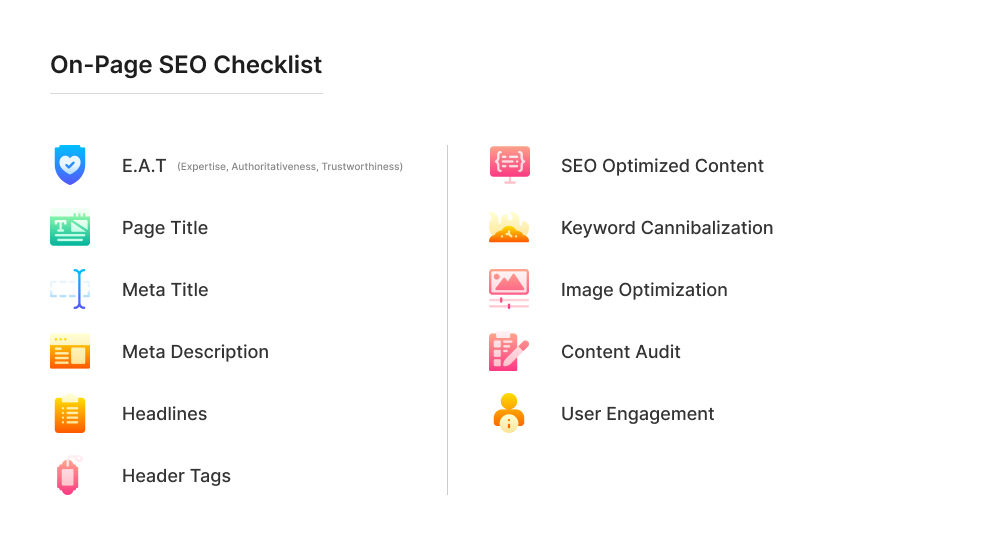
Off page or off site is a vital part of an overall SEO strategy as it not only helps the website gain authority references but also rank higher in search engines.
It refers to optimization techniques not directly linked to your website to improve traffic generation but gaining the backlinks or votes from other websites.
Off-site SEO is crucial to building your site’s domain authority in a specific niche, which is based on many factors including your link profile, Authority references, etc.
The following are some of the most common off-page SEO techniques.
Inbound links or backlinks are links/votes from any website to your site. These links ensure your website’s authority and authenticity. Inbound links are incredibly crucial as their frequency can affect your search rankings.
In an ideal world, 1 website should only backlink once to another website.
It is a blend of social media and SEO marketing strategies to boost higher search rankings. In addition, it improves online visibility, organic traffic, brand awareness, ensures content distribution, which in turn increases conversion rates & engagement.
Social media marketing has monumental effects on crucial factors linke brand loyalty & awareness.
Guest posting or guest blogging is a content marketing method that involves writing blog posts & articles for other websites. Guest blogging improves SEO performance and generates traffic by referring your website, product or service in that post.
While hunting for the guest posts, always remember not all links are equal, meaning few quality guest posts can easily outrank low quality bulk guest posts.
Unlinked brand mentions are mentions of your brand on other websites that do not link back to your website—for instance a site may refer to your webpage but have not linked your brand name back to your domain. In that case you can contact the webmaster or author in case that is an article or blog post & request them to link your website there.
Influencer marketing is a practice where brands promote their products through endorsements and recommendations from influencers and famous content creators found on various social media and other platforms.
You can quickly increase your brand awareness through Influencer marketing.
Technical SEO involves the improvement of crawling, indexing, rendering and website architecture.
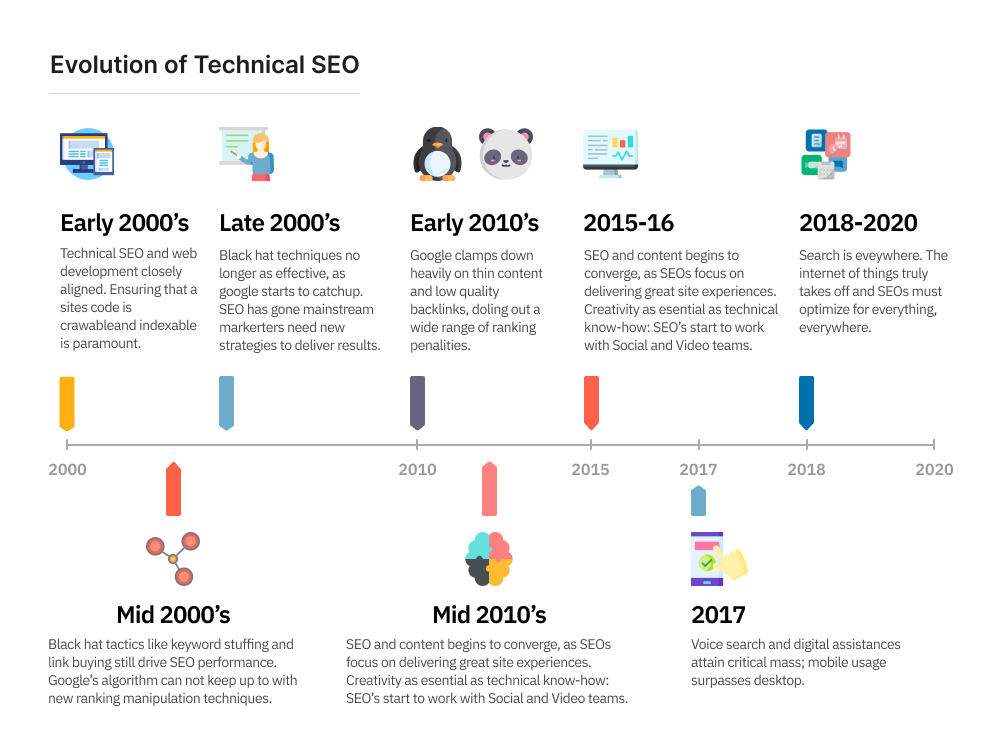
Technical SEO is important because it enables search engines to identify that your website lacks technical issues. Likewise, they will thoroughly crawl, index and focus on your website structure to boost its search rankings.
The following are some of the critical steps of technical SEO. It will ensure that your website is aptly optimized with search engine algorithms and ranked consequently.
Site architecture denotes the framework for organizing, structuring, and interlinking your website’s content. It creates a hierarchy, which allows users to see the content in SERPS according to importance.
Secure Sockets Layers or SSL safeguard your internet connection and sensitive data. SSL certificates are not a direct SEO ranking factor, but it provides the sense of security allowing users to know that your website is safe.
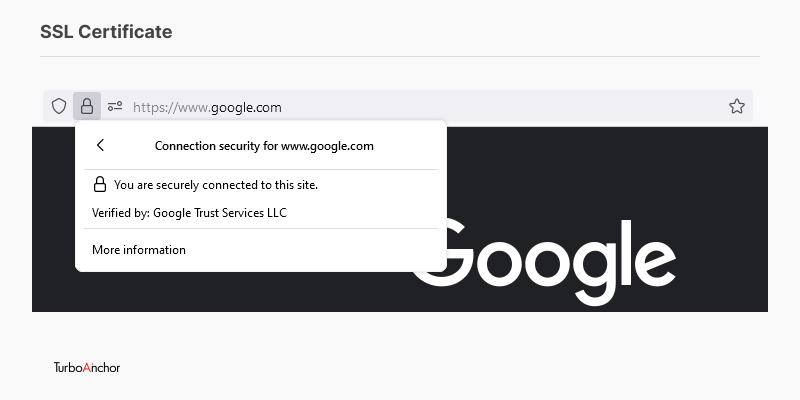
SEO-friendly URLs are simple, short and keyword-rich. URLs are critical because search engines use them to understand your website’s content.
In the below example it is clearly visible that URL 2 is easier to understand and use for than URL 1. Also it contains the necessary information required for SEO.
URL 1: https://turboanchor.com/12243646/
URL 2: https://turboanchor.com/what-are-keywords-effective-keyword-research/
XML sitemaps is a file that enable search engines to access your website’s essential pages. It is an effective and quicker way for websites to share this critical information.
Sitemaps in Search Console